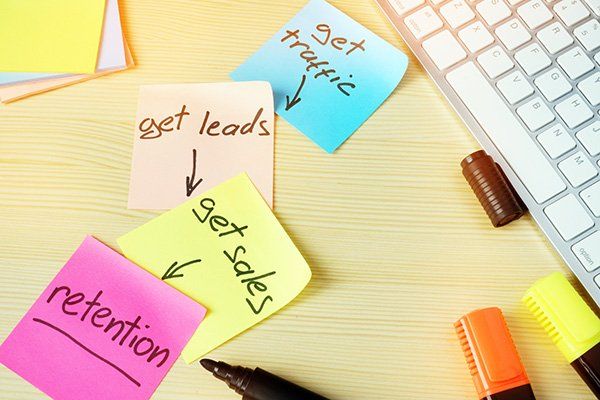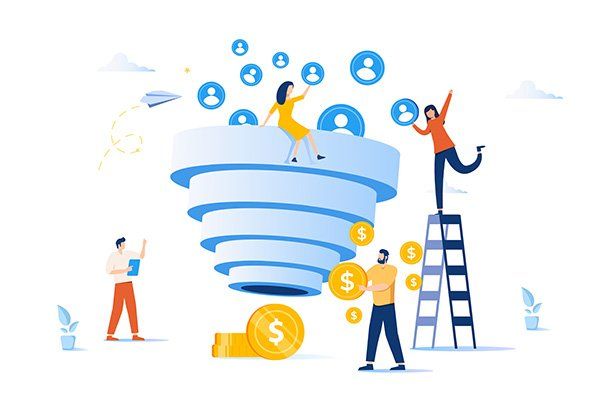In the ever-evolving landscape of online marketing, sales funnels have become a crucial component of any successful business strategy. A well-structured and optimized sales funnel can significantly increase your conversion rates and drive revenue growth. In this comprehensive guide, we will explore the best practices for creating and optimizing sales funnels that maximize your conversion potential. From attracting potential customers to nurturing leads and closing sales, we will cover it all. So, let’s dive in and discover the key strategies to unlock the full potential of your sales funnel.
Understanding Sales Funnels
Before we delve into the best practices, let’s start by understanding what a sales funnel is. A sales funnel is a visual representation of the customer journey, from the initial contact with your brand to the final conversion. It comprises several stages, each aimed at guiding prospects closer to making a purchase. The primary stages of a typical sales funnel include awareness, interest, consideration, intent, evaluation, and finally, conversion.
The Awareness Stage: Creating a Powerful First Impression
In the awareness stage, the goal is to attract the attention of potential customers and introduce them to your brand. To make a powerful first impression, you need to leverage various marketing channels such as search engine optimization (SEO), social media marketing, content marketing, and paid advertising. By using compelling headlines, engaging content, and targeted keywords, you can drive organic traffic and pique the interest of your target audience.
The Interest Stage: Nurturing Leads through Engaging Content
Once you have captured the interest of your prospects, it’s essential to nurture those leads and build a relationship with them. This is where the interest stage comes into play. By providing valuable and engaging content, such as blog posts, videos, and e-books, you can establish yourself as an authority in your industry. Offering lead magnets, such as free guides or exclusive discounts, can also entice prospects to provide their contact information, enabling you to further nurture the relationship.

The Consideration Stage: Convincing Prospects to Choose You
As prospects move through the funnel, they enter the consideration stage, where they actively evaluate different solutions to their problems. This is your opportunity to showcase the unique value proposition of your products or services and convince prospects to choose you over your competitors. Utilize case studies, testimonials, and comparisons to demonstrate the benefits and superiority of your offerings. Additionally, providing personalized recommendations and addressing common objections can go a long way in nurturing trust and driving conversions.
The Intent Stage: Encouraging Action and Generating Conversions
At the intent stage, prospects have shown a strong interest in your offerings and are on the verge of making a purchase. To encourage action and generate conversions, you need to create a seamless and frictionless experience for your prospects. Streamline your checkout process, offer secure payment options, and provide clear and concise calls-to-action. Incorporating scarcity tactics, such as limited-time offers or exclusive bonuses, can also create a sense of urgency and prompt prospects to take immediate action.
The Evaluation Stage: Providing Exceptional Customer Experience
Even after the initial conversion, your job is not done. In fact, the evaluation stage is where you can turn satisfied customers into brand advocates and drive repeat business. Delivering exceptional customer experience, offering personalized support, and requesting feedback can foster long-term relationships and lead to positive reviews and referrals. By consistently exceeding customer expectations, you can build a loyal customer base that continues to contribute to your business’s growth.

Sales Funnel Best Practices
Now that we have a clear understanding of the various stages of a sales funnel, let’s explore some best practices to optimize each stage and maximize your conversion potential.
1. Sales Funnel Optimization through A/B Testing
A/B testing is a powerful technique that allows you to compare different variations of your sales funnel elements to determine which ones yield the best results. You can test different headlines, call-to-action buttons, landing page designs, and even pricing strategies. By constantly experimenting and analyzing the data, you can make data-driven decisions and refine your sales funnel for optimal performance.
2. Personalization: Tailoring the Experience
Personalization is key to engaging your prospects and making them feel valued. Leverage customer data to segment your audience and deliver targeted messages and offers that resonate with their specific needs and preferences. By providing personalized recommendations and addressing pain points directly, you can increase the likelihood of conversion and build stronger customer relationships.
3. Clear and Compelling Call-to-Action (CTA)
Your call-to-action is the driving force behind conversions. Ensure that your CTAs are clear, concise, and compelling. Use action-oriented language that creates a sense of urgency and entices prospects to take the desired action. Experiment with different CTA placements, colors, and designs to optimize their visibility and effectiveness.
4. Streamlined Checkout Process
The checkout process should be smooth and hassle-free to prevent cart abandonment. Simplify the steps required for completing a purchase, minimize form fields, and offer guest checkout options. Incorporate multiple secure payment methods and prominently display trust signals, such as security badges or customer reviews, to instill confidence in your prospects.

5. Retargeting and Remarketing Campaigns
Not all prospects convert on their first visit to your website. Implement retargeting and remarketing campaigns to reach out to those who have shown interest but haven’t yet made a purchase. Display targeted ads across various platforms to remind them of your offerings and provide incentives to revisit your sales funnel. This can include offering exclusive discounts, free trials, or additional content that addresses their specific concerns.
6. Continuous Lead Nurturing
Lead nurturing is a critical component of a successful sales funnel. Implement an automated email marketing campaign that delivers valuable content and engages prospects at each stage of the funnel. Provide educational resources, industry insights, and personalized recommendations to keep your brand top-of-mind and build trust with your audience.
7. Analytics and Data-driven Insights
To optimize your sales funnel, you need to rely on accurate data and analytics. Implement robust tracking and analytics tools to gather relevant data on user behavior, conversion rates, and customer demographics. Analyze the data regularly to identify bottlenecks, areas of improvement, and opportunities for optimization. This will allow you to make informed decisions and refine your sales funnel strategy accordingly.
Here at Eliyahna Creative, our expertise is design that and best practices that employ the best sales funnel attributes to guarantee the most from your calls to action. Contact us for your website design today!
Eliyahna is a full-time web developer and designer and the CEO of Eliyahna Creative, LLC.


